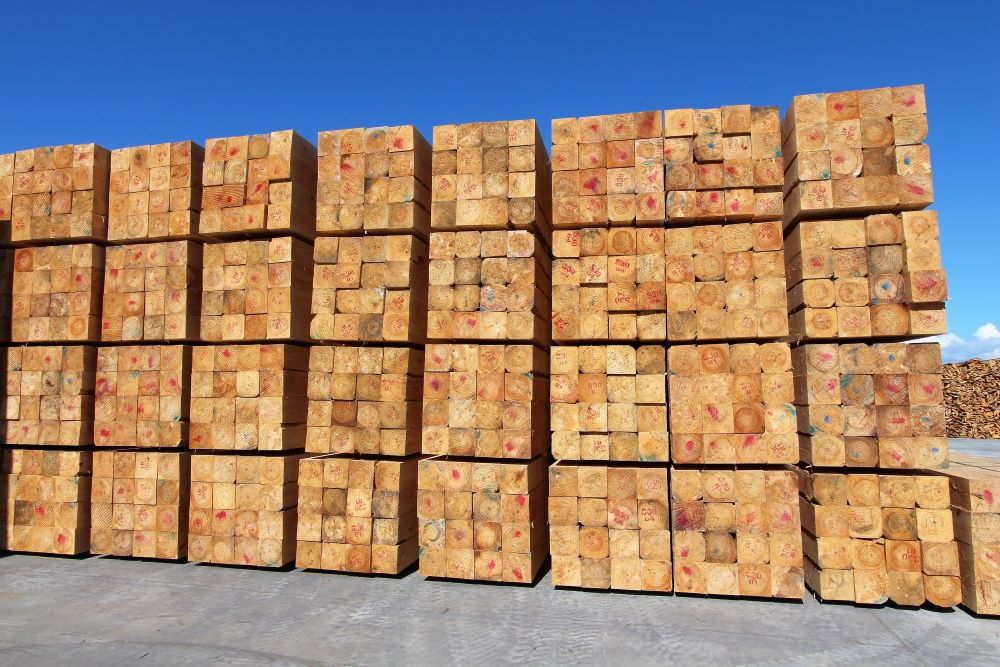Timber production
Growing a timber crop together with farming has many benefits like shade, shelter, erosion control and financial return. We’re fortunate in Northland to have the land and the climate to produce high quality timber.
Radiata pine is not the only timber crop out there – small-scale growers may do better growing high-value species or producing a greater proportion of higher value (e.g. pruned) timber. Profitability requires careful selection of species for timber quality and site compatibility.
Trees planted for erosion control or amenity can also yield valuable timber. Managed totara (Podocarpus totara), both naturally regenerated and planted, can produce high quality timber within a pastoral system.
Plan before you plant
Before you put any trees in the ground, do your homework. Familiarise yourself with the regulations - If you are planting a forest then you’ll need to notify Northland Regional Council in writing.
Forest rights legislation
A common view from potential planters is, "Why should I plant trees when I may shift? I'll get nothing from them" – but that’s not necessarily the case.
The Forest Rights Registration Act (1983) allows a block of trees to be under an agreement, for example a joint venture, registered against the title of the property involved. This means that if the land is sold the registered owners retain the felling rights to the trees.
What do you want to produce?
There are lots of different timber products – clearwood, pulpwood, framing timber, firewood, farm timber, posts and building timber, high-value uses like furniture and more.
Work out what product you want to produce to help select the right species.
Time - trees must be well tended for high returns
How much time now and in future years, will you have for tending your trees? Can you afford to use a contractor? The labour input for planting is approximately eight to 12 hours per hectare. This increases to 60+ hours per hectare for pruning during a two to three-year period.
Plan your yearly planting to make use of available labour.
Land availability and species to use
Work out what species you can grow on your land and how far the planting sites are from a road or good farm track. The further from the road, the larger the area you will need to plant to make it economical to extract the trees when they mature.
Protecting soil and waterways
Make sure that your site is practical for extracting thinnings and/or the final crop without damaging the soil or causing erosion. Keep protective strips of vegetation along waterways to minimise siltation.
Get advice
- Contact a land management advisor
- Get advice from the Farm Forestry Association
- Talk to a private consultants and knowledgeable locals.
Get your spacing right
Final spacings for clearwood production generally range from 200 to 600 stems per hectare. Generally lower stockings produce bigger trees. These justify the expense of pruning with larger volumes of clearwood, but take longer to grow. If you’re targeting a durable heartwood product, then large diameters are required.
To combine trees with grazing, final spacings should be no more than 150 stems per hectare to encourage grass growth right up to the base of the tree. The trees should be pruned to six metres or higher to maintain grass growth and produce quality timber.
Initial stocking - how many trees do I plant to achieve the desired final crop?
Plant more trees than are needed for the final crop to allow for losses, encourage upward growth, and to have a good range of trees to choose from for your final crop.
Initial stocking rates for radiata pine can be as low as 600 stems per hectare, with less than a third of these thinned. Other species are more costly to establish because much higher stocking rates are required to produce straight, vigorous final crop trees.
Planting methods
Grid planting
Trees are usually set out in a grid pattern. Depending on spacing, pruning may be carried out on as many as three times the final crop number.
Usually this system is better for higher stocking rates in plantation forestry where less thinning is required.
Gap planting
Using this system, high value trees like blackwood Acacia melanoxylon, eucalypt, totara, kauri or rimu are planted in lines cut in scrub or gorse.
This provides the seedling with a lightwell and encourages the tree to grow straight for the light, without heavy side branches. Trees planted in this situation will generally have a trunk free of branches to the height of the surrounding scrub.
Sequence for planting
- As early as possible: Order seedling trees. Some varieties may be sold out up to two years ahead, so the sooner trees are ordered the better.
- March-May: Control possums, hares or rabbits and complete fencing. Undertake weed control.
- April-May: Spray individual planting spots with non-residual weed killer and/or graze the area hard with stock to reduce weed competition.
- June-August: Plant when the ground is moist.
- October: Release trees by clearing the grass around them. Fertilise, except on fertile farm sites.
- March: Check for survival. Release again if necessary, then start again for next year.
| Suitable timber species |
| Acacia melanoxylon, Australian/Tasmanian blackwood Agathis australis, Kauri Alnus cordata, Italian alder C. macrocarpa, Monterey cypress Cryptomeria japonica, Japanese cedar Cupressus lusitanica, Mexican cypress x Cupressocyparis Ovensii, Ovens cypress Dacrydium cupressinum, Rimu E. globoidea, White stringybark E. microcorys, Tallow-wood E. muelleriana, Yellow stringybark E. pilularis, Blackbutt E. saligna, Sydney blue gum Eucalyptus botryoides, Southern mahogany Gleditsia triacanthos, Honey locust Podocarpus totara, Totara Populus spp., Poplar Quercus robur, English oak Pinus radiata, Radiata pine Robinia pseudoacacia, robinia, Black locust Sequoia sempervirens, Californian redwood |
 Before you plant, decide what you want to produce.
Before you plant, decide what you want to produce.
